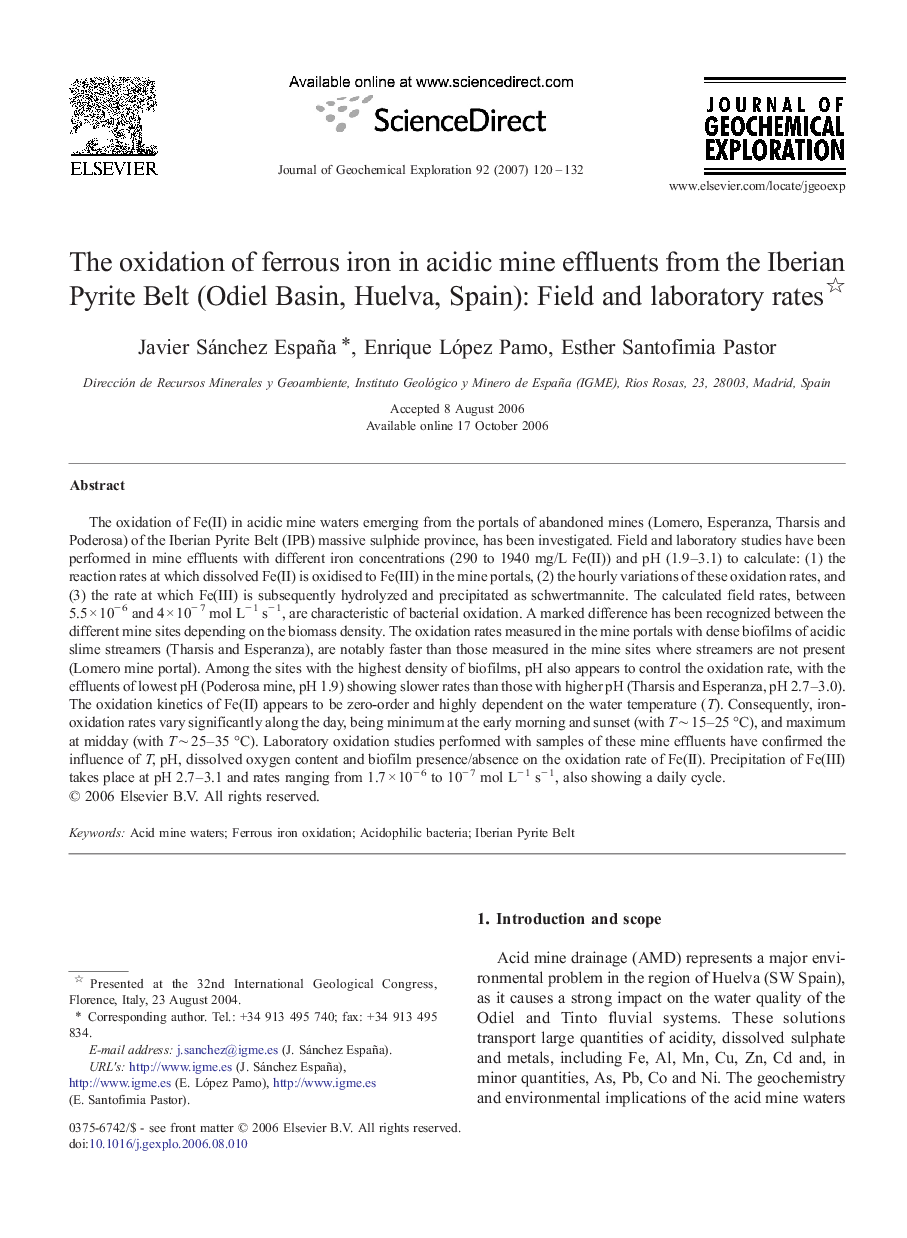| کد مقاله | کد نشریه | سال انتشار | مقاله انگلیسی | نسخه تمام متن |
|---|---|---|---|---|
| 4458364 | 1620957 | 2007 | 13 صفحه PDF | دانلود رایگان |

The oxidation of Fe(II) in acidic mine waters emerging from the portals of abandoned mines (Lomero, Esperanza, Tharsis and Poderosa) of the Iberian Pyrite Belt (IPB) massive sulphide province, has been investigated. Field and laboratory studies have been performed in mine effluents with different iron concentrations (290 to 1940 mg/L Fe(II)) and pH (1.9–3.1) to calculate: (1) the reaction rates at which dissolved Fe(II) is oxidised to Fe(III) in the mine portals, (2) the hourly variations of these oxidation rates, and (3) the rate at which Fe(III) is subsequently hydrolyzed and precipitated as schwertmannite. The calculated field rates, between 5.5 × 10− 6 and 4 × 10− 7 mol L− 1 s− 1, are characteristic of bacterial oxidation. A marked difference has been recognized between the different mine sites depending on the biomass density. The oxidation rates measured in the mine portals with dense biofilms of acidic slime streamers (Tharsis and Esperanza), are notably faster than those measured in the mine sites where streamers are not present (Lomero mine portal). Among the sites with the highest density of biofilms, pH also appears to control the oxidation rate, with the effluents of lowest pH (Poderosa mine, pH 1.9) showing slower rates than those with higher pH (Tharsis and Esperanza, pH 2.7–3.0). The oxidation kinetics of Fe(II) appears to be zero-order and highly dependent on the water temperature (T). Consequently, iron-oxidation rates vary significantly along the day, being minimum at the early morning and sunset (with T ∼ 15–25 °C), and maximum at midday (with T ∼ 25–35 °C). Laboratory oxidation studies performed with samples of these mine effluents have confirmed the influence of T, pH, dissolved oxygen content and biofilm presence/absence on the oxidation rate of Fe(II). Precipitation of Fe(III) takes place at pH 2.7–3.1 and rates ranging from 1.7 × 10− 6 to 10− 7 mol L− 1 s− 1, also showing a daily cycle.
Journal: Journal of Geochemical Exploration - Volume 92, Issues 2–3, February–March 2007, Pages 120–132